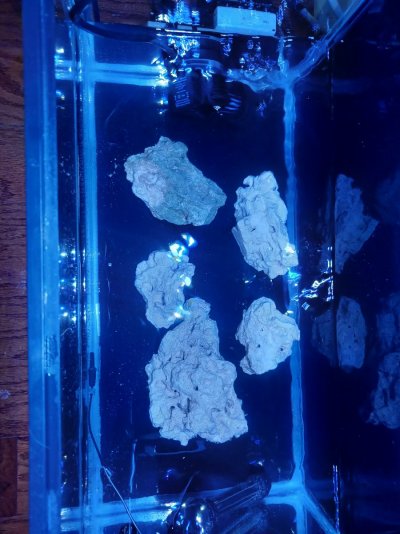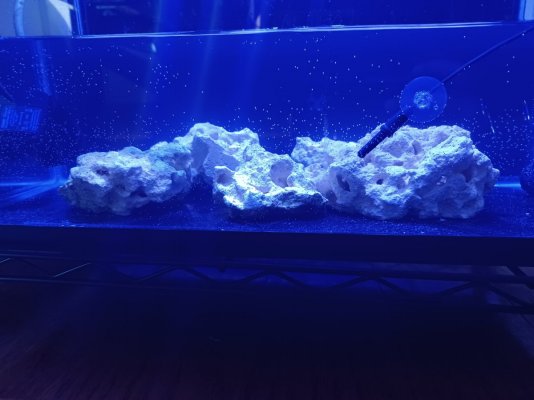
Build Thread - Amalee’s 75g Build
Hey friends ❤️ Finally pulled the trigger and made a “dream” purchase. It’s not an expensive addition, just one I was a bit nervous about so it doesn’t disrupt the balance in the tank. But I could not be happier to have this guy! Torch mountain will be finished up next week too! I got the...www.reef2reef.com
there's my first proof. middle pages, tap water on rocks.
see that degree of live rock? that's not four tiny chunks soaked for hours.
I'm able to provide direct work examples for my claims, I'm needing half that effort from this collective questions group
go find a work example you think turned out poorly, or one using as few rock we can inspect that turned out well.
They aren't 4 tiny chunks soaked for hours it's 4.5 pounds easily and they have been in the sump for six months. Since the tank was initially cycled.





















